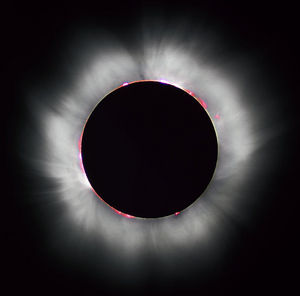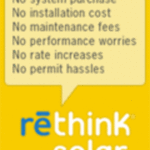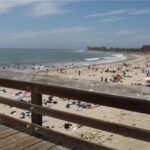One can only hope that the American public will show more interest in the next solar eclipse over our most recent complete lunar eclipse on Feb 20. But then most people are more interested in seeing day turn into night rather than night turning into even darker night. Amazingly, a lot of people who were alive in 1979 and remember that year’s total solar eclipse will likely still be around in 2017 when the next total solar eclipse is visible to most of America–particularly the west coast. I was about 7 and-a-half years old when the total eclipse of the sun took place on the school morning of February 26, 1979 and was as freaked out by seeing it as anybody else who’d never experienced one before in their lifetimes. At the time, most of us thought that the wait until the next one 38 years later would take forever. Now, with the next one only nine years away–the usual boggling of the mind takes place at how fast things approach you thought would never get here.
There are a lot of differences, though, between the total solar eclipse of 1979 with the one in August 2017. Not that I want to rush you when you have nine whole years to prepare–but it’ll obviously be a bit different in the best viewing spots and the time of day. Fortunately for my state of Oregon–we’ll be one of the first states in the western half of the U.S. to see the eclipse in its totality as it was in 1979. Well, actually, the state that had the best vantage point of all in eclipse longevity was Washington State back then. The eclipse put the Goldendale Observatory (which contains some of the most powerful public telescopes in the country) on the map when about 15,000 people visited there to observe the eclipse. National media also covered the eclipse from there–and I wouldn’t be surprised if eclipse aficionados and vast amounts of media will visit there again in 2017…assuming the place is still open then due to continual budget problems that have plagued the observatory for years.
It should be noted that the state that’ll get the longest viewing time on the 2017 solar eclipse is in Christian County, Kentucky–located near Hopkinsville (located in the SW portion of the state). “Where?” you probably say just to be…well, snide. Every small place that becomes a central point of interest in a big story deserves to get noticed. In 2017, a lot of people will be flocking to Christian County and bringing in a lot of tourism dollars to the nearby metropolis of Hopkinsville. Yes, these Kentuckians will be fortunate to have complete darkness in the daytime for close to 2 and-a-half minutes. That’s longer than anybody else or even Oregon will get. Nonetheless, most of America will experience a total eclipse of the sun for the first time since 1918. That’s right, the 1979 eclipse only had a path of totality in the NW United States as shown above. Don’t confuse these with the partial (actually half) eclipse of the sun seen in the western half of the U.S. on July 1, 1991. I remember that one giving the illusion of it being near dusk when it was high noon.
What to expect when a total eclipse of the sun hits during mid-day…
For those who weren’t alive yet in 1979 or lucky enough to live in the NW United States–experiencing a total solar eclipse for the first time in your life will be (or should be) something you’ll never forget. What was the most fascinating in the 1979 eclipse was seeing how nature was affected by morning suddenly turning into night for about a minute. If you have kids in school by the time 2017 rolls around, it’s likely they’ll have what I had in 1979: A few hours off of school for safety reasons. And for those who won’t be looking at the eclipse through safe means in an observatory or your own self-prepared devices (more on that below), I’d highly recommend going outside as it gets dark to experience the eerie silence from birds and other nature getting confused why nighttime is falling only about three or four hours after the sun came up. In the 1979 eclipse, the totality level occurred around 9 or 10 in the morning. Reportedly, it’ll be around the same time for the 2017 one depending on the time zone.
Of course, if you’re outside, the temptation will be there to look directly up at the eclipsed sun. Be sure to listen to all the proper directions on how to view the eclipse, even though I’m going to assume you’re already in the know that looking directly at an eclipse when the sun is still visible will fry your corneas. The pinhole projection method is the most famous and convenient method to see the whole process of an eclipse. With that system, you just cut a pinhole into a piece of cardboard, turn your back to the sun (either outside or inside your home through a window) and let the sun project through the pinhole onto another piece of cardboard. This gives you a chance to see it as a quasi-movie playing out on a tiny screen. The image (as you would with a projector) can be made bigger or smaller depending on how close you have the projected image in front of the cardboard with the pinhole.
And then you have the method of solar filters that look similar to 3-D glasses. A lot of these are a bit risky depending on the quality and where you buy a pair. It’s always a smart idea to buy ones from stores (online or otherwise) that deal exclusively in equipment for amateur or professional astronomy. It’s said that the solar filters made with polyester are the riskiest depending on the thickness. Some of those solar filters have little holes in the filter material that could let sunlight get into your eyes and damage them. But you’re not supposed to look for long period at the sun even with solar filters. These are really only recommended if you have nothing else–and you have eight years to prepare anyway to get that something else.
One of the best methods is to put filters on a telescope or a camera. The filters with metal coatings (sold at all camera stores) allow you to see the sun and the eclipse in different colors, too, which a lot of people prefer. This does give you a chance to experience some color rather than just seeing a shadowy sun reflection on the above-mentioned cardboard.
The decreasing appreciation of eclipses…
If you’re like me, you get irked when people don’t bother to go out and see an eclipse because they claim they’ve “seen them all before.” You usually get that with cynical older people, though you’re getting that more from younger people, too. A lot of media reports on Feb 21 said that the total lunar eclipse the night before didn’t have gobs of people standing outside watching it–while “American Idol” received record numbers of people watching. I was fortunate to see the lunar eclipse straight-ahead out my front door as the moon rose in the east–yet the excitement from me and my family at seeing the eclipse from such a spectacular vantage point was pretty much alone in my neighborhood. That proved to me a massive disconnect between natural wonders in our skies and what apparently entertains the American public now.
A lot of people would just say in response to that above scenario: A lunar eclipse is considerably different in popularity from a total solar eclipse. Perhaps so, but I’m not expecting a lot of people to actually go outside to enjoy it (or view it through those methods mentioned above) in 2017. A lot of sociological investigations are saying lately that people just aren’t having anything to do with nature and everybody pretty much stay indoors now with all the options for entertainment being available there. We have eight years at the time of this writing to change that–but it’ll likely get worse as people get afraid to interact in the outdoors due to the perception that too many dangers from crime and nature exist out there.
___
It’ll be interesting in 2017 to see the psychological response to a total eclipse of the sun. It stirred up a lot of people (including myself) in 1979–and I expect even more of a strange reaction 38 years later. In the off-chance all knowledge of the eclipse is unknown then by a large segment of people deciding to ignore it–you could always pretend to be a Hank Morgan from Mark Twain’s “A Connecticut Yankee in King Arthur’s Court” and pretend you have the power to block out the sun until people agree to get outdoors and enjoy nature again…




